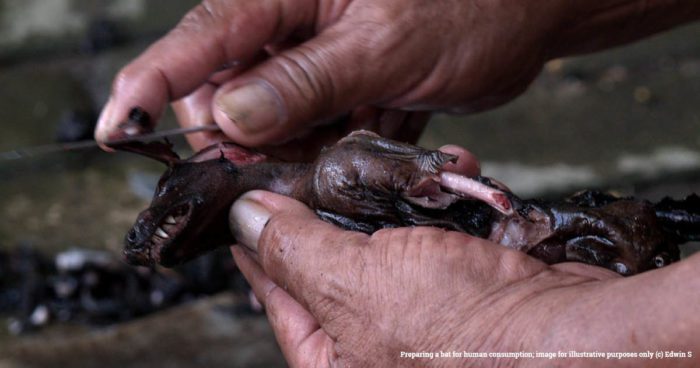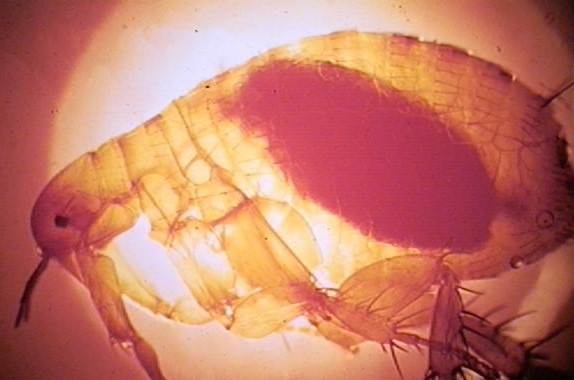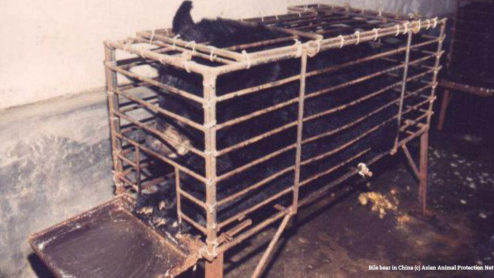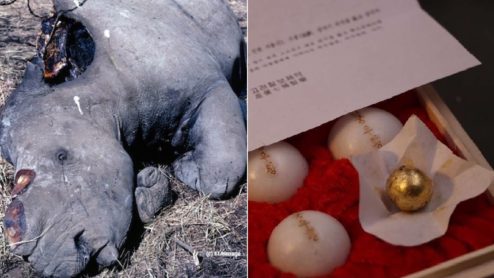Coronavirus is no surprise – our relationship to wildlife has put us on a course to this for years
Scientists and public health professionals have for years been warning the world another serious pandemic could happen at any moment and that the global community was unprepared for it.
These calls for action went unheeded and now coronavirus (aka COVID-19) is storming through our societies like a shock wave.
The pandemic is causing health and economic crises unimaginable a few months ago. Measures to mitigate or suppress the spread of the disease are having extraordinary impacts on our way of life and freedom.
How did this happen? And what can we do to stop it from happening again?
Central to the warnings from scientists was that the next pandemic was all but guaranteed to originate from either wildlife or domestic animals. Many pathogens which cause diseases in humans, including those not affecting animals now, have been of ‘zoonotic’ origin; in other words, they have originated in animals.
Old diseases such as tuberculosis and influenza A came from domestic animals, plague from rats and the fleas living on them and hepatitis B from apes. The emergence of agriculture and expansion of human populations around 11,000 years ago were pivotal in creating the conditions for diseases to spread among us. The acceleration of global travel, environmental destruction and urbanisation during the past century have matured these conditions and intensified the possibility of contagion.
Past pandemics illustrate the animal origins of some of the most lethal diseases humans have faced. Bubonic plague originated in rats and their fleas, influenza A (H1N1) in birds and HIV in chimpanzees. The 14th century’s ‘Black Death’ bubonic plague pandemic killed between 25 and 40 million, the 1918 influenza A (H1N1) pandemic killed 50 million and the HIV/AIDS pandemic has killed 35 million to date.
The risk of new disease outbreaks happening has been exacerbated by the progressive destruction of Earth’s biodiversity. Large-scale habitat loss, settlement of remote areas and wildlife exploitation have all magnified the chances of new diseases crossing from wildlife to humans. The risk of these spreading has been further amplified by higher human population densities and our tightly connected world.
Situations in which humans touch or consume wildlife or domestic animals present some of the greatest risk of disease emergence: a hunter in a Congo forest village eating meat from a gorilla infected with Ebola; a market trader in Hong Kong selling birds infected with avian influenza; or a horse keeper in Australia interacting with a horse infected with Hendra (a disease that originates in bats).
While the person first infected with the current coronavirus (formally named SARS-CoV-2) has not been identified, many of the early cases detected were among workers from the Huanan Seafood Market, in Wuhan, China. This was a hub for the trade in all kinds of living and dead wildlife such as bats, rats, deer, civets, badgers, beavers and, possibly, pangolins for consumption as food.
In late January, news organisations started to report that scientists in China had identified pangolins as a potential origin of the coronavirus outbreak. It later turned out their research findings had been miscommunicated and only a part of the genome was found to match a coronavirus found in pangolins.
As with the two other new coronaviruses that have infected humans since 2003 – SARS-CoV-1 and MERS-CoV – research now suggests bats are the most likely origin, although it is possible the virus was transmitted from bats to another animal (an intermediate host) and then on to humans.
A series of disease outbreaks that have originated from animals over the past 20 years has given us warning signs of how close a severe pandemic was. The 2003 SARS outbreak was followed by six outbreaks classified by the World Health Organisation as public health emergencies of international concern; those that originated in animals included the 2009 H1N1 (swine flu) pandemic, the 2013-16 Western African Ebola virus epidemic, the 2015-16 Zika virus epidemic and the recent 2018-20 Kivu Ebola epidemic (Democratic Republic of Congo).
Despite an acknowledgement of the risk posed by diseases that originate in wildlife, the global community failed to adequately respond. The origin of the 2003 SARS coronavirus outbreak was wildlife served for food – palm civets consumed at a restaurant in Guangzhou, China.
Since then, in emerging disease hotspots, wildlife has continued to be traded between communities, countries, regions and continents.
It is clear that modern medicine alone cannot protect humans from new diseases; a vaccine for this coronavirus pandemic is expected to take 12-18 months until it can be deployed for public use.
To prevent future disease outbreaks, we must terminate the harmful activities making them more likely to happen. At the top of the list, along with habitat loss, is the legal and illegal trade, trafficking and consumption of wildlife as meat, medicine, pets, clothing, jewellery and ornaments.
In 2020, the disease outran us – next time we can stop it at the starting blocks, but only if we end wildlife trade now.








